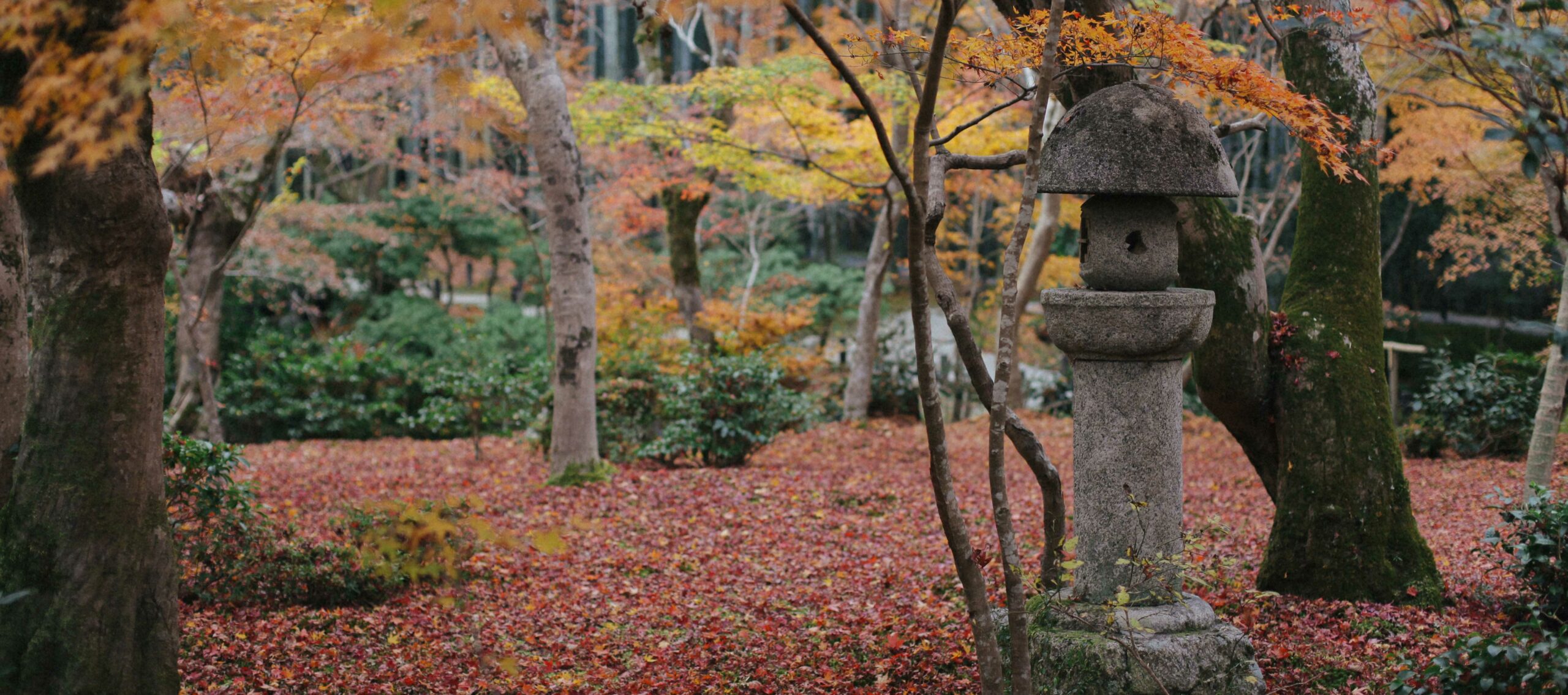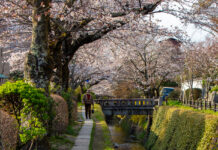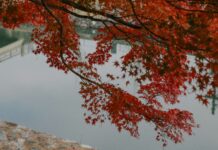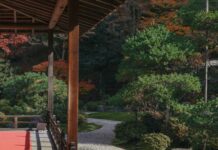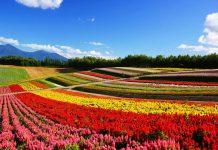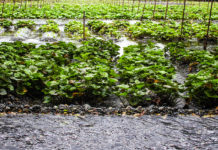Zuiganzan Enkо̄-ji (commonly referred to simply as ‘Enkoji’) sits enveloped in woodland on the slopes of Kyoto’s Higashiyama hillside, to the north of well-known destinations such as Nanzenji and Kiyomizudera. The temple buildings themselves aren’t as detailed or complex as most in the city, but Enkoji is commonly visited primarily for its unique and expansive gardens.
Enkoji’s meandering site has three garden styles within its walls. First, a stone path lined with moss, black pine, and maple trees creates the main approach to the temple’s central buildings. Passing along this Japanese-style walkway creates all the more surprise when arriving at the temple’s kare-sansui (dry stone garden), which is a recently constructed modernist design. Beyond the plastered walls and traditional tiled gateway lies the ‘old’ garden, richly forested in a mix of bamboo and maple, rising up the hillside and blending into Higashiyama’s natural woodlands.
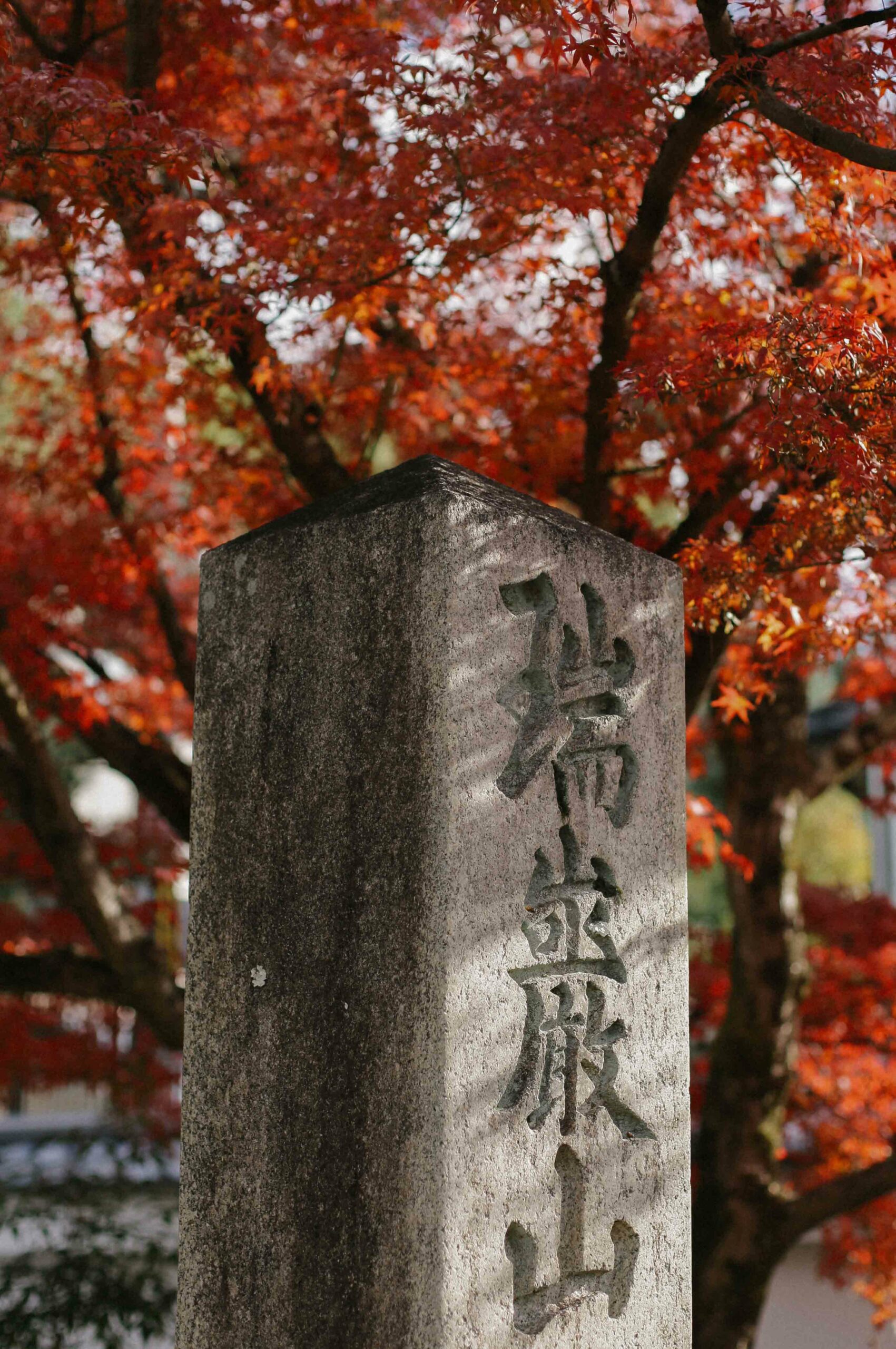
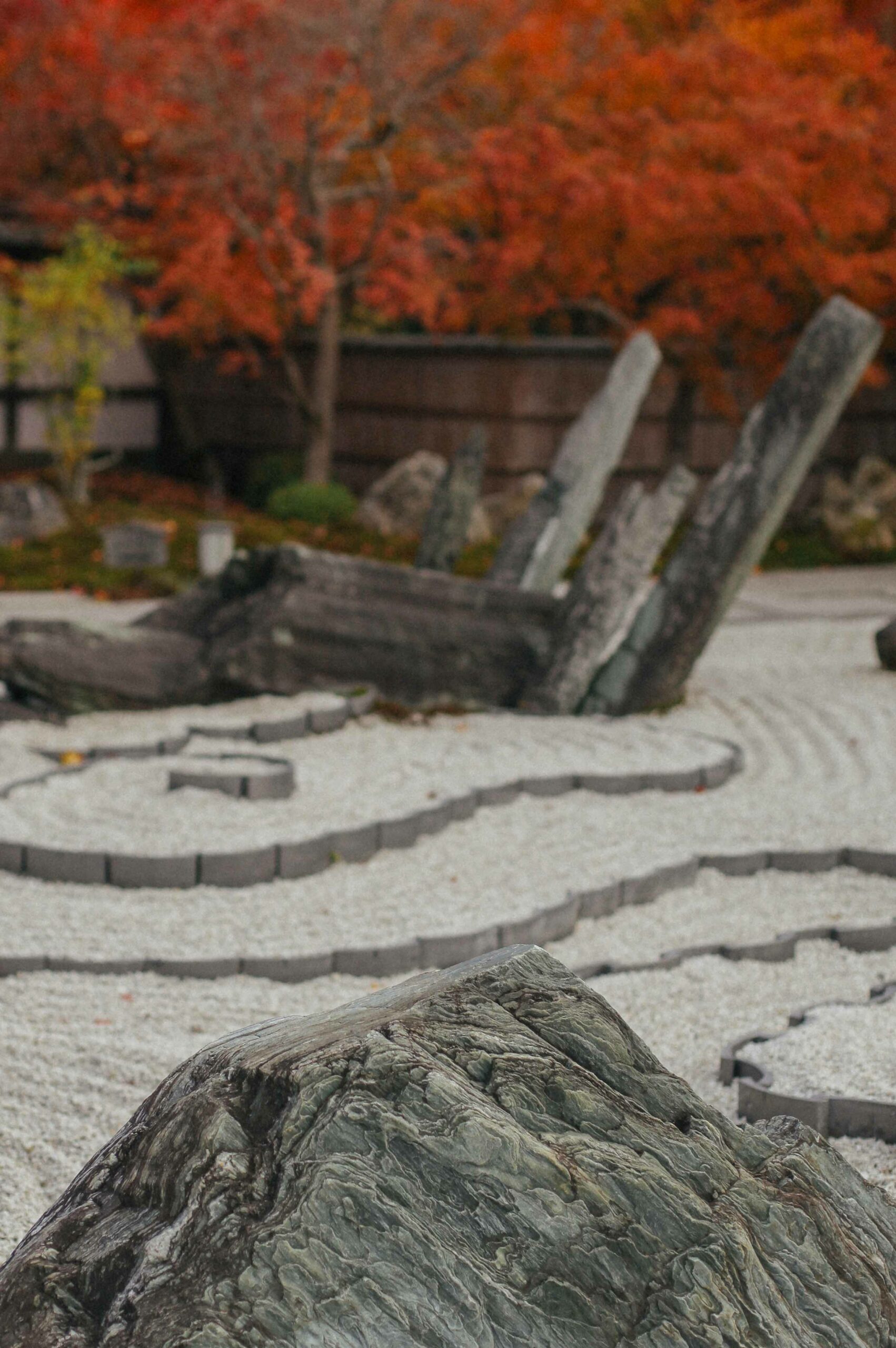
Enkoji is an ideal addition to any itinerary, but will be an especially interesting visit for those interested in the intersection of modernist design and the Japanese garden. However, the blend of traditional kare-sansui and modernism isn’t a new phenomenon in Kyoto. Eminent designer Mirei Shigemori created the celebrated (and historically controversial) stone gardens of Tо̄fukuji, in the south of the city, in 1939. Enkoji’s gardens, however, are newer — and less controversial for contemporary tastes. Enkoji’s abbot, Tsubo Keikan, designed and built the gardens with the help of his brother, completing them in 2013. Keikan, however, makes no claim to any specialist design knowledge; he is simply following a tradition of abbots creating their own kare-sansui.
This front garden, named ‘Honryutei,’ gathers all of the traditional elements of the kare-sansui. It contains raked white gravel, moss, specially selected and positioned stones, and abstract representations of ancient motifs from Chinese and Japanese mythology. The swirling spiral tiles resemble the shapes of clouds or whirlpools, with their design inspired by Tibetan Buddhist thangka (religious paintings) and temple eaves. Tall stones erupt from these swirling forms like jagged bones. The motif is of a dragon, rising and falling through heavenly clouds and mountaintops.
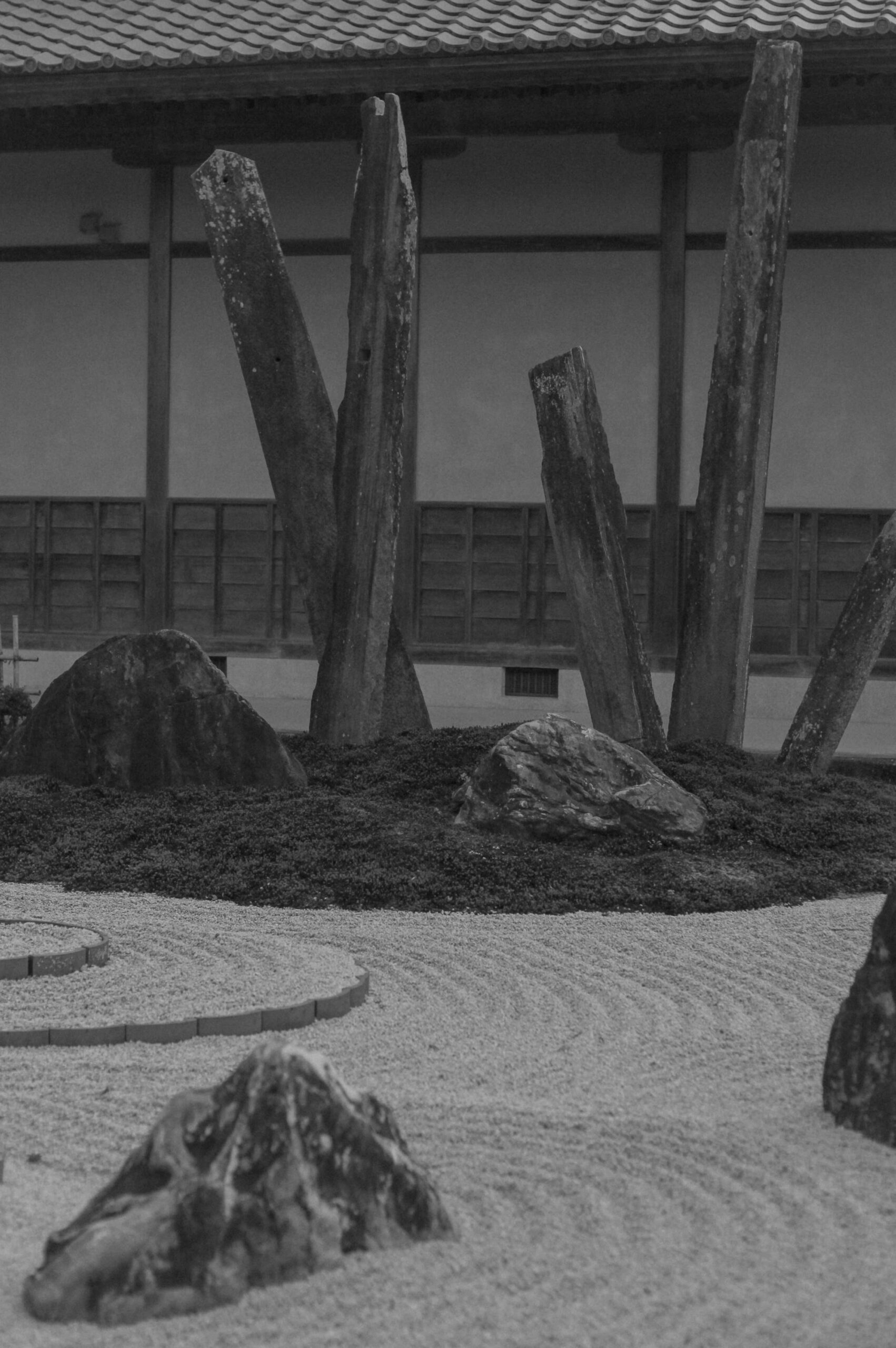
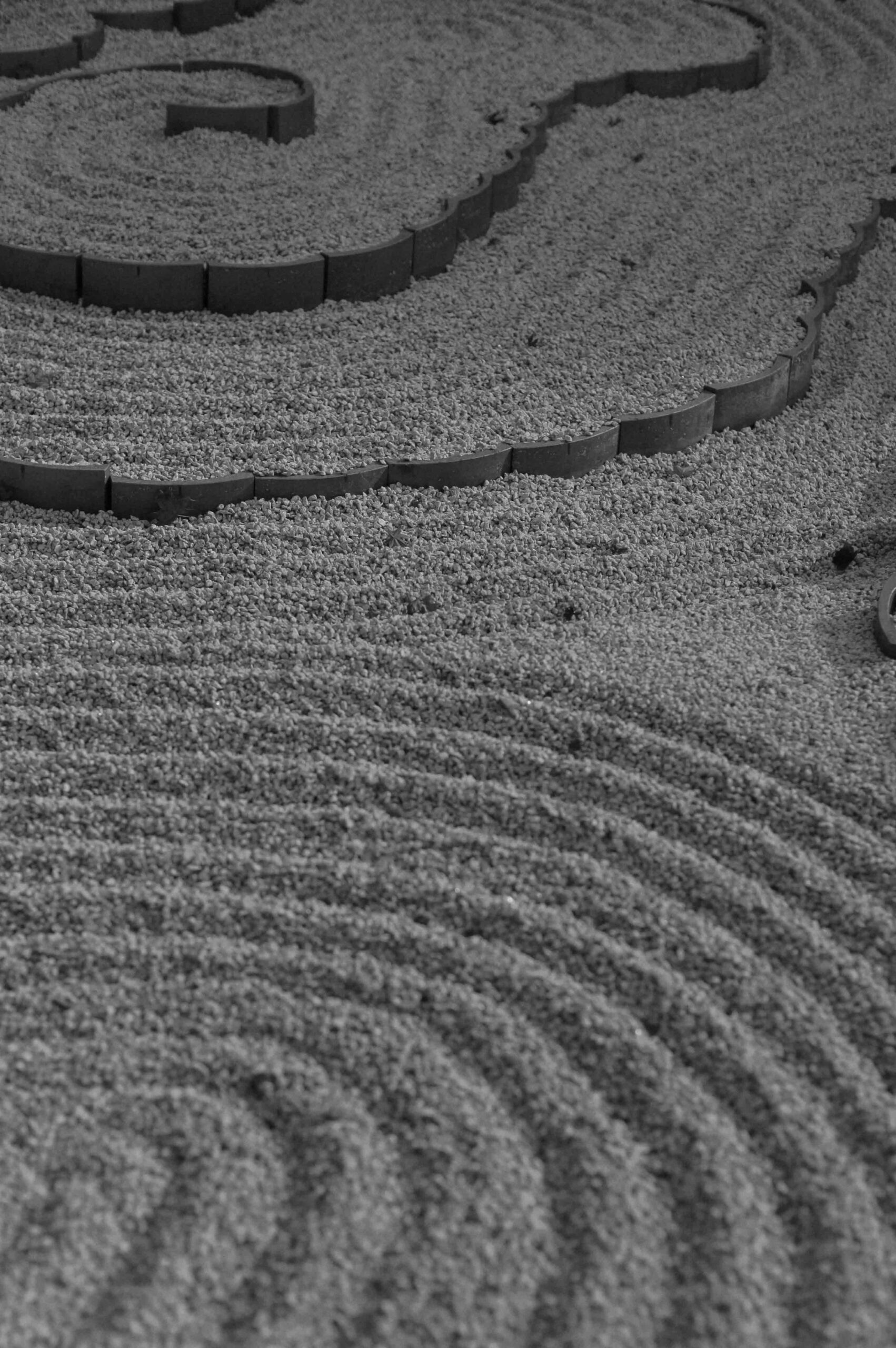
It’s worth taking the time to walk Enkoji’s pathways that surround Honryutei, viewing the layers of stone and meaning from multiple angles for the fullest effect. Best visited in autumn (which is late November in Kyoto), the garden and surrounding buildings will be framed in all of the most vibrant hues of the season, from deep yellow to bloody crimson, via electric shades of orange. These colours combine and contrast wondrously, further inside the temple grounds. Here, a pale blue-green bamboo grove creates a perfect foil to the effervescent maples which lean out over a small adjoining valley.
A pond is set into the lowest level of the Enkoji’s hillside, visible from the eaves of the central building. Its still waters reflect the maple leaves above like a mirror, creating the illusion of an inverted world under the water. Winding pathways cut through the woodland’s low branches, framed with rolling cushions of deep green moss. In autumn, the moss is carpeted by fallen leaves in shades of gold and umber, again creating a sense of ‘up is down.’ The abundance of seasonal colour lights an amber glow in the glade’s interior, punctuated by a solitary stone lantern and a trail of decorative rock basins.
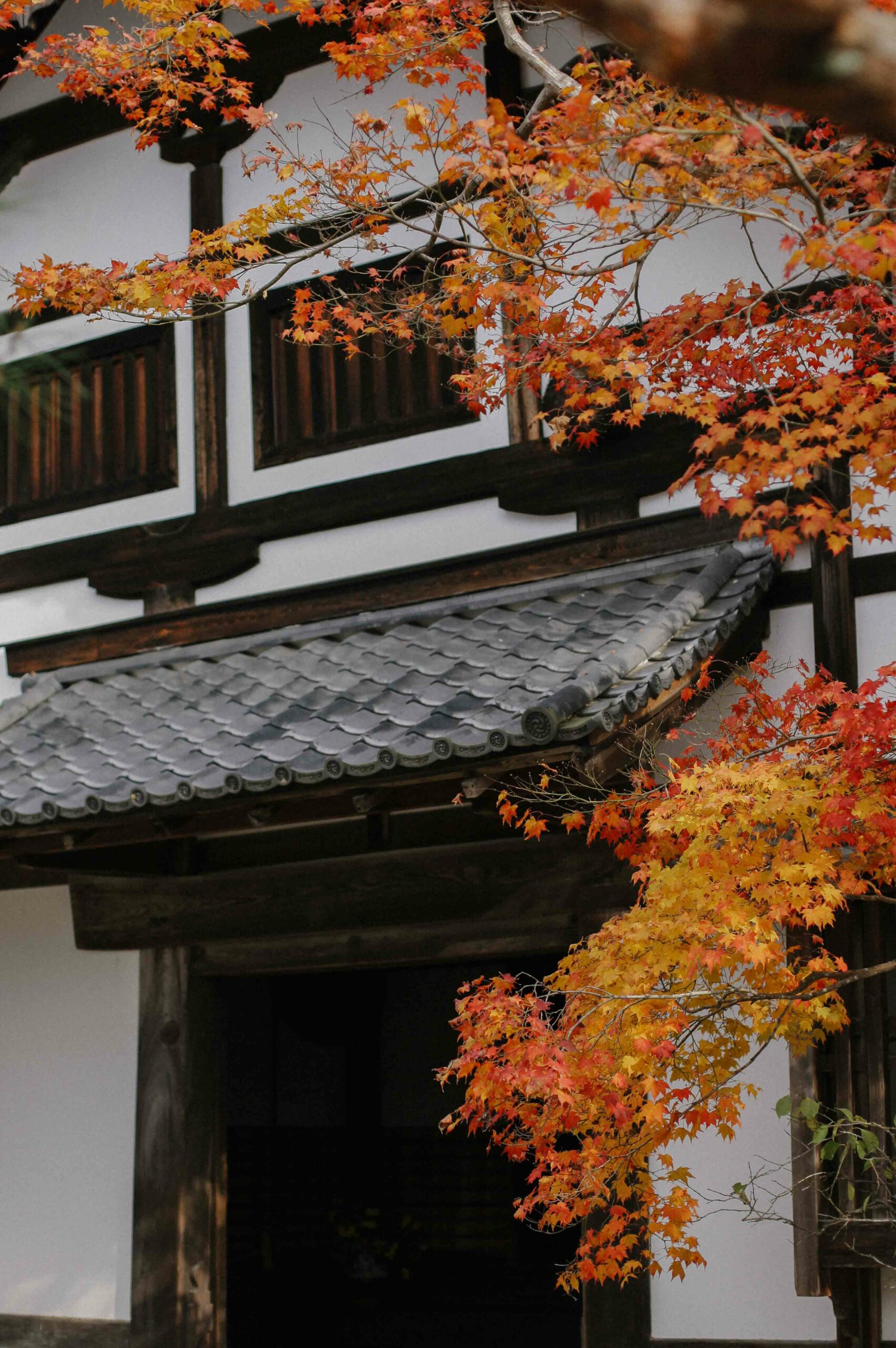

It would be easy to remain here, drifting through the lower pathways among the whispering trees. However, the garden leads up and away, to stone steps cut into the hillside. Here, a deep grove of moss and ferns cover the steeper slopes, enveloping the second courtyard, punctuated only by bursts of orange maple. Following a sandy pathway towards a break in the woodland’s canopy, you’ll be rewarded with a sweeping view over northern Kyoto.
The city moves from old to young through successive layers of domestic buildings. Nearby, homes are older and retain classical designs, with gabled roofs and dark slate tiles. Next, a layer of multistorey apartments frames a tree-lined central avenue. Here, the joining of the Kamo and Takano rivers at Shimogamo Shrine is hidden entirely. The sheer extent of Kyoto’s autumnal reddening also becomes apparent from the hillside viewpoint behind Enkoji. Almost all of the low-lying hills are home to endemic Japanese maple trees, turning their colours synchronously depending on their altitude.
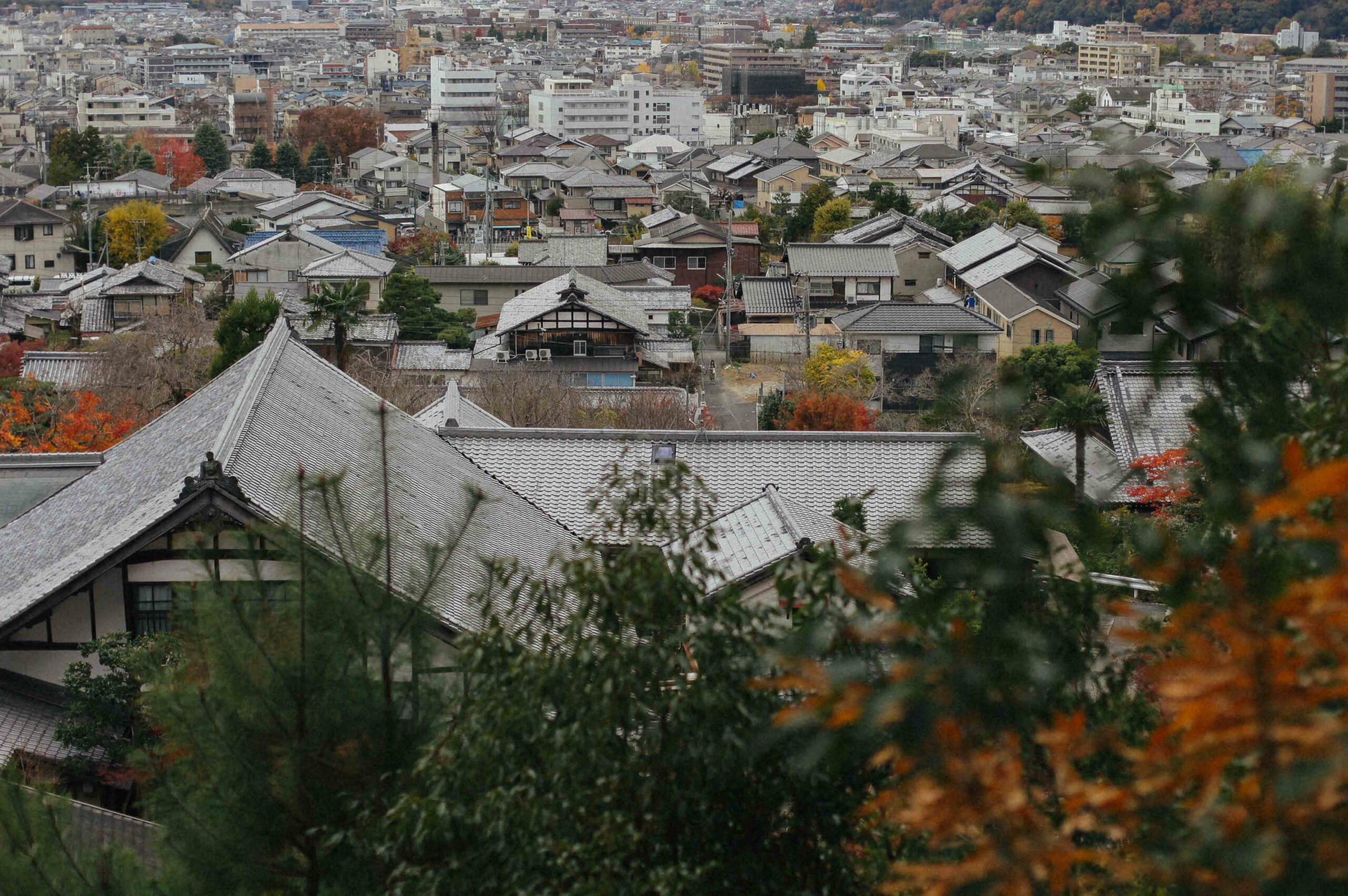
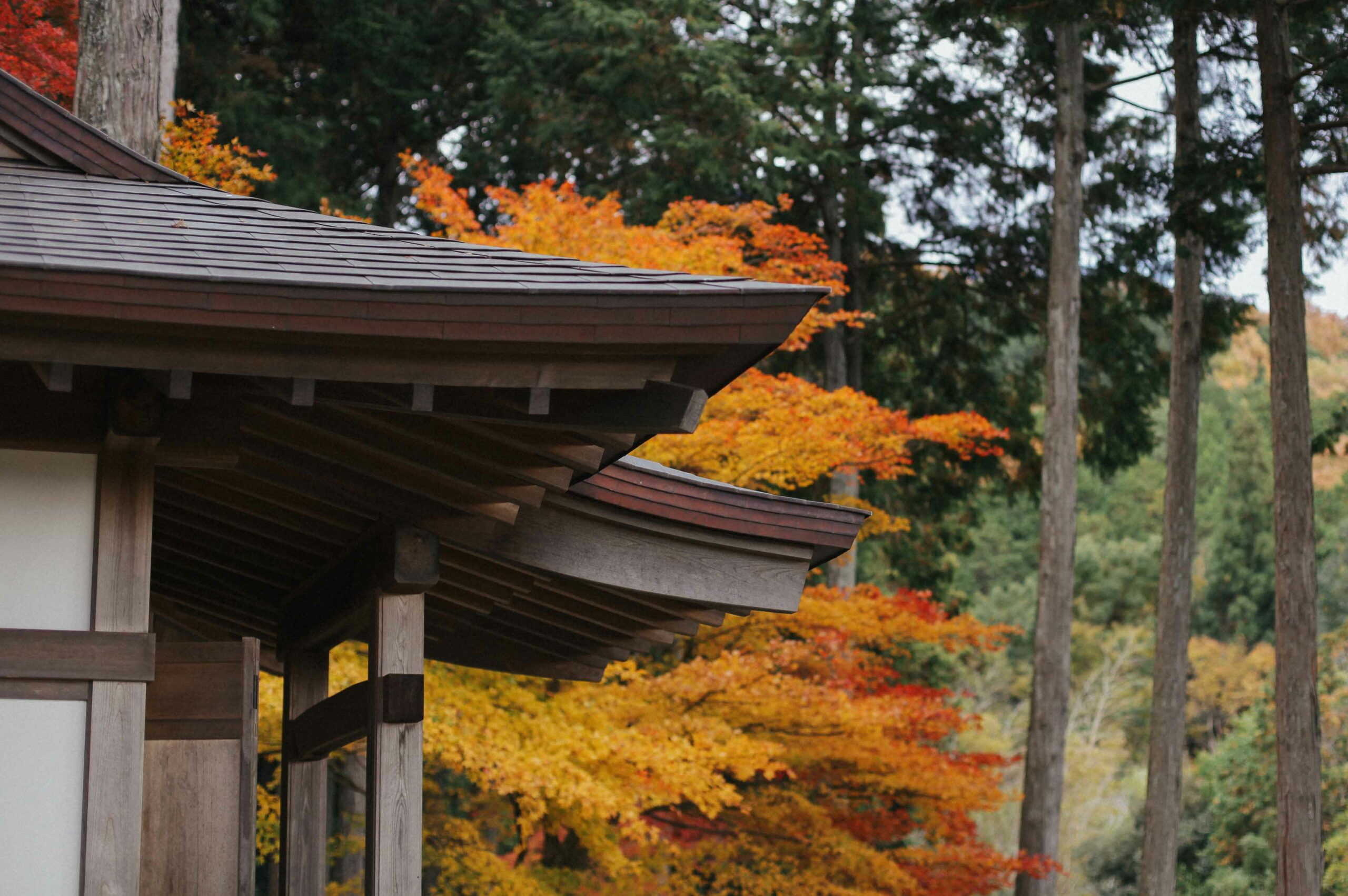
From this viewpoint, you can walk a few metres along the same footpath to find large wooden and stone benches; an ideal spot to rest while looking out and further south into Kyoto city. Taking the steps back down will lead you past a cemetery for humans and a memorial stone for cats and dogs. The stone erected in honour of our loving pets is carved only with the word “thankyou” (practically challenging you not to shed a tear).
More steps will lead you down and past the temple bell and its wooden housing, next to a natural water well which is covered with a deep green bamboo lid. This lower garden stands in contrast to the jutting rocks and swirling stones of the Honryutei. It is soft, yielding, a home to natural textures and colours. The temple’s second building frames this lower space, offering a wraparound veranda from where you can sit and view the garden. Both verandas create a cinematic scene, with their letterbox aspects framing the soft ground and low trees as a single, sweeping panorama.
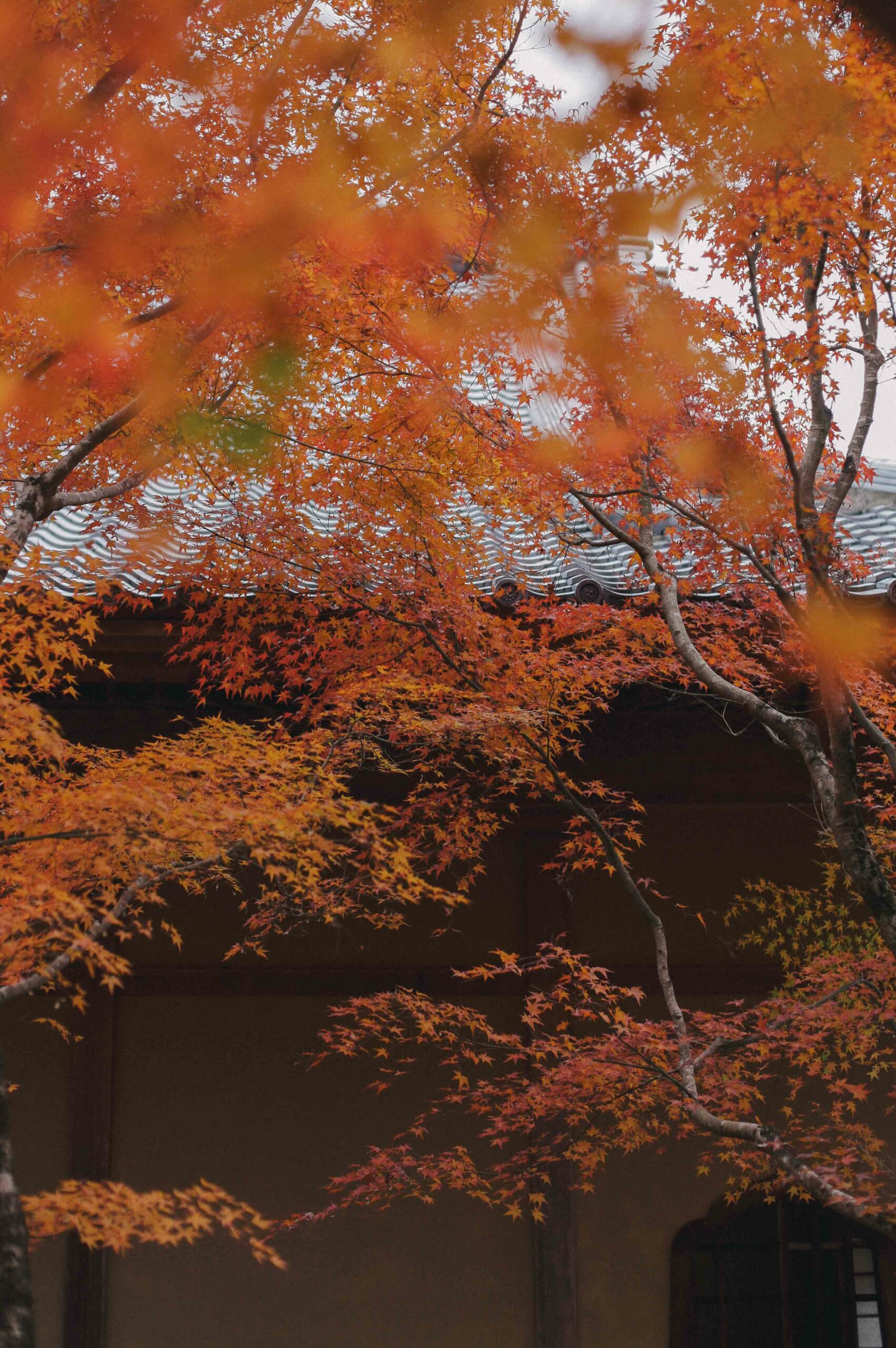

Enkoji has for many years been one of Kyoto’s legitimate ‘hidden gems’ — despite its seasonal beauty, visitor numbers were previously typically low due to it being inaccessible by tour bus. However, it has recently become popular on social media as a photogenic location, and visitor numbers (and selfie sticks) are increasing. For visitors who prefer their temples serene, the best times to visit are at exactly 9:00am as the gates first open, or at around 4:00pm, as the temple closes at 5:00pm. Photographers looking to catch the Enkoji’s autumnal colours at their best will want to arrive for golden hour, which is around 3:00pm in November, with sunset at around 4:30pm behind the western hills. The temple sits on the eastern hills of Kyoto, facing west, meaning the setting sun will light up the autumn maples on a clear day.
Even in the subdued light of clouded skies, Enkoji’s subtle scenery glows from within. It’s well worth visiting at the quieter times of day to experience the uncanny stillness of the temple’s varied gardens. Enkoji is also a five minute walk from Shisendо̄, a hermitage-turned-temple sure to appeal to visitors with a preference for all things rustic.

Access:
By train: from Demachiyanagi station, ride the Eiden line to Ichijо̄ji Station. From here, walk for about 15-20 minutes following this route.
By city bus: From Kyoto Station, bus number 206 will take you to Ichijо̄ji Sagarimatsu-chо̄ bus stop. From here, walk 5-10 minutes along this route.
Name: Zuiganzan Enkoji
Address: 13 Ichijoji Kotanicho, Sakyo Ward, Kyoto, 606-8147, Japan
Open: 9:00am – 5:00pm, last entry 4:30pm, seven days a week.
Admission: ¥500Website: https://www.enkouji.jp/en
Post by Japan Journeys.



